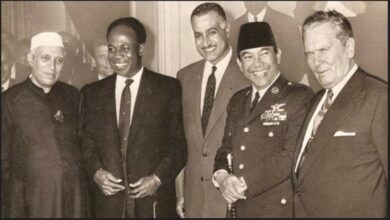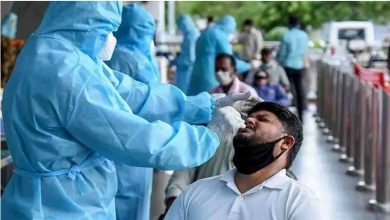THE MYSTERIES OF THE CHINESE BIO-WEAPON PROGRAM
INVESTIGATION
 Subir Bhaumik,
Subir Bhaumik,
Senior Journalist , Former BBC Correspondent
In July 2019, a rare event occurred in Canada, whereby a group of Chinese virologists were forcibly dispatched from the Canadian National Microbiology Laboratory (NML) in Winnipeg, a facility they worked in, running parts of the Special Pathogen Programme of Canada’s Public Health Agency.1 Experimental infections – including aerogenic ones – of monkeys with the most lethal viruses found on Planet Earth comprise nearly a routine therein. Four months earlier, a shipment of two exceptionally virulent viruses dealt with in the NML – Ebola and Nipah viruses – was on its way from NML, ended in China, and has thereafter been traced and regarded to be improper, specifically put as “possible policy breaches”, or rather but an “administrative issue”, ostensibly.
Yet actually the scope of this incident is much wider. The main person seems to be Dr. Xiangguo Qiu, an outstanding Chinese scientist, born in Tianjin. Heading until recently the Vaccine Development and Antiviral Therapies section of the Special Pathogens Programme, she primarily received her medical doctor degree from Hebei Medical University in China in 1985 and came to Canada for graduate studies in 1996. Later on, she was affiliated with the Institute of Cell Biology and the Department of Pediatrics and Child Health of the University of Manitoba, Winnipeg, not engaged with studying pathogens.But a shift took place, somehow. Since 2006, she has been studying powerful viruses, Ebola virus foremost, in the NML. The two viruses shipped from the NML to China – Ebola and Nipah – were studied by her in 2014, for instance (together with the viruses Machupo, Junin, Rift Valley Fever, Crimean-Congo Hemorrhagic Fever and Hendra).Yet utmost attention has been paid to Ebola, with the highly legitimate aim of developing effective prophylaxis and treatment for infected people. Inevitably, her works included a variety of Ebola wild strains – among them the most virulent one, with 80% lethality rate – and much relied on experimental infections of monkeys, including via the airways. Remarkable achievements were attained, indeed, and Dr. Qiu accepted the Governor General’s Innovation Award in 2018.
So far so good, seemingly. But the collateral Chinese plexus cannot be ignored. Married to a Chinese scientist – Dr. Keding Cheng, also affiliated with the NML (specifically the “Science and Technology Core”), and primarily a bacteriologist who shifted to virology – Dr. Qiu frequently visited and maintained tight bonds with China, generally speaking, and many Chinese students joined her projects in the NML during the recent decade, coming from a notable range of Chinese scientific facilities. Nonetheless, among the latter there are four facilities that have been regarded to possess parts of the Chinese biological weapons alignment, namely:
- Institute of Military Veterinary, Academy of Military Medical Sciences, Changchun
- Center for Disease Control and Prevention, Chengdu Military Region
- Wuhan Institute of Virology, Chinese Academy of Sciences, Hubei
- Institute of Microbiology, Chinese Academy of Sciences, Beijing
All of the four mentioned facilities collaborated with Dr. Qiu within the context of Ebola virus, yet the Institute of Military Veterinary joined a study on the Rift Valley fever virus too, while the Institute of Microbiology joined a study on Marburg virus too. Noticeably, the drug used in the latter study – Favipiravir – has been earlier tested successfully by the Chinese Academy of Military Medical Sciences, with the designation JK-05 (originally a Japanese patent registered in China already in 2006), against Ebola and additional viruses.
However, the studies by Dr. Qiu are considerably more advanced and fruitful, in certain aspects. They are apparently vital for the Chinese biological weapons developing, in case Ebola, Nipah, Marburg or Rift Valley fever viruses are included therein, which is a plausible postulation; let alone the wild type viruses in themselves. And it is of note that only Nipah virus is naturally found in China or neighbouring countries. Collectively, then, the interface between Dr. Qiu and China has a priori been highly suspicious. On top of it, the shipment of the two viruses from NML to China apparently generated an alarm, beyond its seeming inappropriateness. And an unavoidable question is whether previous shipments to China of other viruses or other essential preparations, took place from 2006 to 2018, one way or another.
At any rate, the controversial shipment brought about the entering of information technology specialists into Qiu’s office after hours, for her computer. Consequent to the incident, security access for Dr. Qiu, her husband and the Chinese students was revoked. Her regular trips to China also started being denied.16 Notably, Dr. Qiu made at least five trips over the school year 2017-18 to the above mentioned Wuhan National Biosafety Laboratory of the Chinese Academy of Sciences, which was certified for BSL4 in January 2017. Moreover, in August 2017, the National Health Commission of China approved research activities involving Ebola, Nipah, and Crimean-Congo hemorrhagic fever viruses at the Wuhan facility, and in March 2019, the Chinese published their tour de force.
Jens Stoltenberg, the secretary-general of NATO, said at a news conference he couldn’t comment on this specific case but appeared to suggest the possibility of espionage. “What I can say in general is that we have seen increased efforts by the nations to spy on NATO allies in different ways,” he noted. Connectedly or not, Dr. Qiu collaborated in 2018 with three scientists from the US Army Medical Research Institute of Infectious Diseases, Maryland, studying post-exposure immunotherapy for two Ebola viruses and Marburg virus in monkeys; a study supported by the US Defence Threat Reduction Agency.
Finally, the multiplicity of the Chinese grants – all of on a national level – supporting the works done under the leading of Dr. Qiu in the NML is rather intriguing; included are:
- National Key Program for Infectious Disease of China
- National Key Research and Development Program of China
- National Natural Science Foundation of China International Cooperation and Exchange Program
- Special Foundation of President for Ebola virus research from the Chinese Academy of Sciences.
- President’s International Fellowship Initiative from the Chinese Academy of Sciences
- China National Key Subject of Drug Innovation
- Youth Innovation Promotion Association of the Chinese Academy of Sciences
- National Natural Science Foundation Award, Ministry of Science and Technology
- National Science and Technology Major Projects
- Beijing Advanced Innovation Center for Structure Biology
- Major Program of the National Natural Science Foundation of China.
Certainly an impressive list.
In sum, there is still a possibility that Dr. Qiu and her husband will return to work in the NML. Yet beyond the administrative dimension of this complicated affair, it is largely also a matter of intelligence analysis and assessment, which might constitute a ‘grey area’. A challenge for the Canadian Security Intelligence Service. Time will tell, sooner or later.
( Subir Bhaumik is veteran BBC journalist and author on strategic issues)





